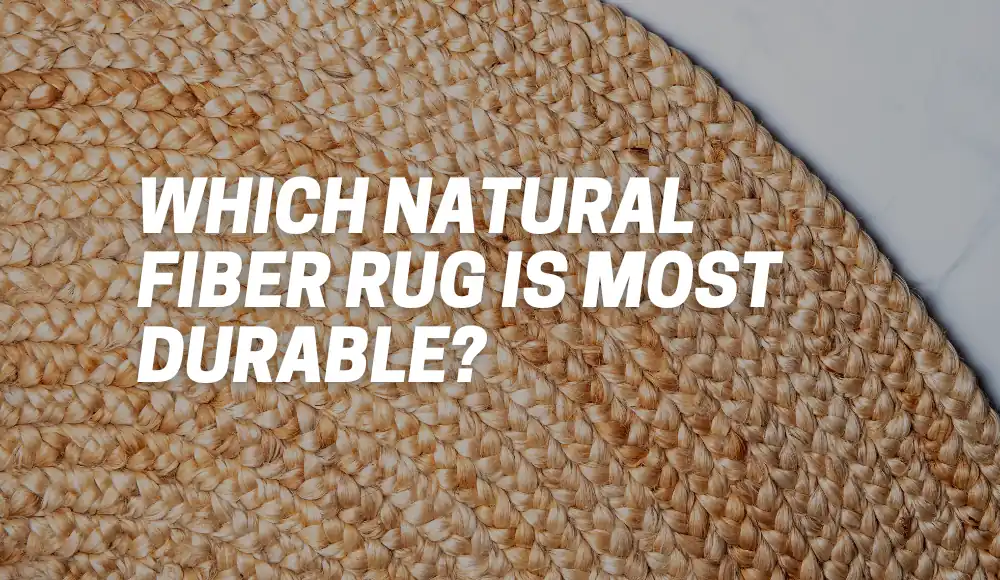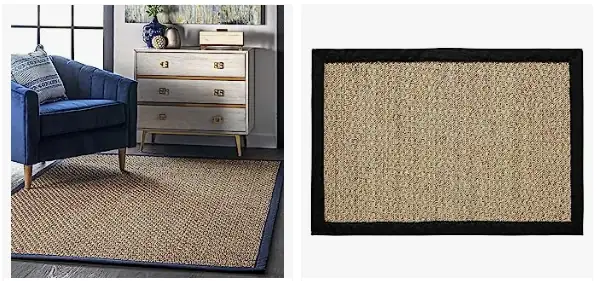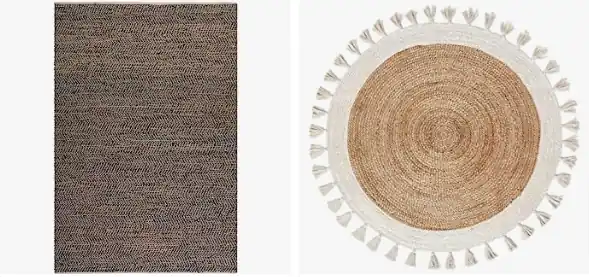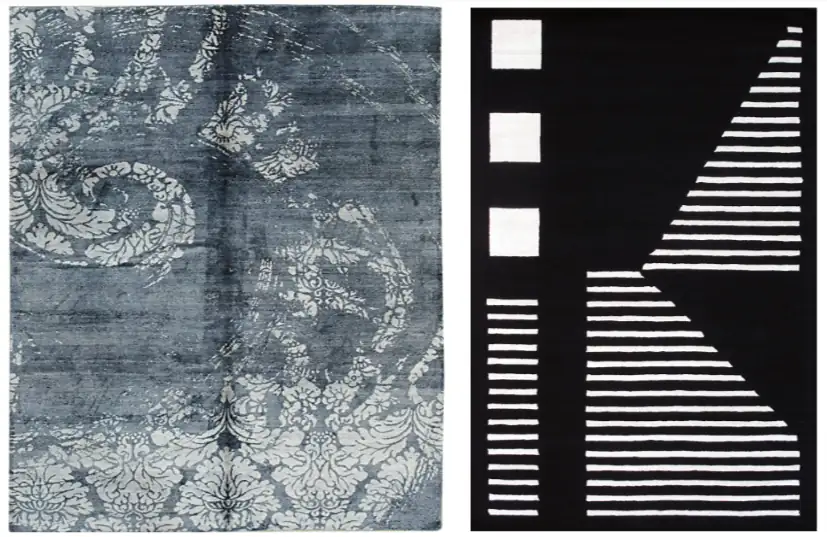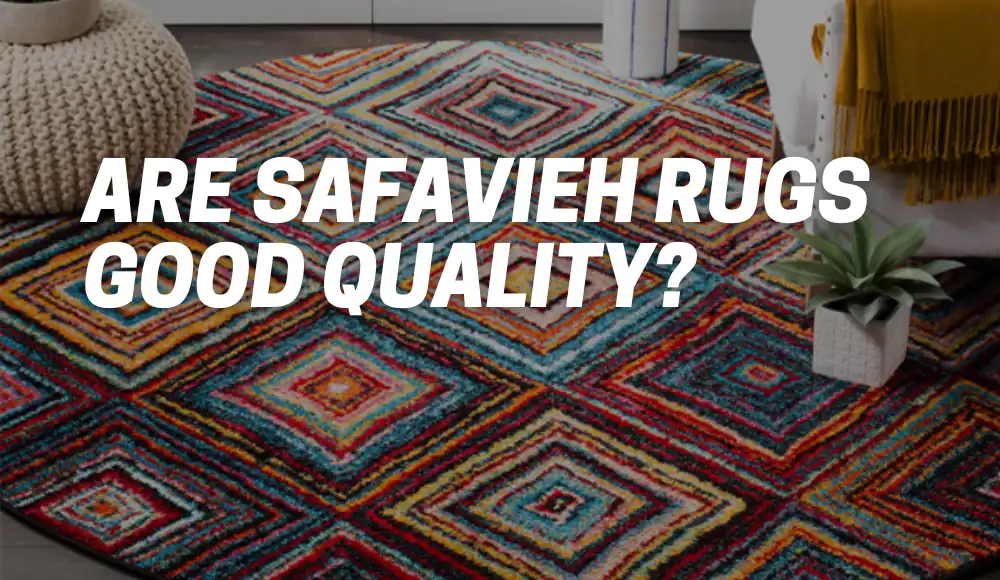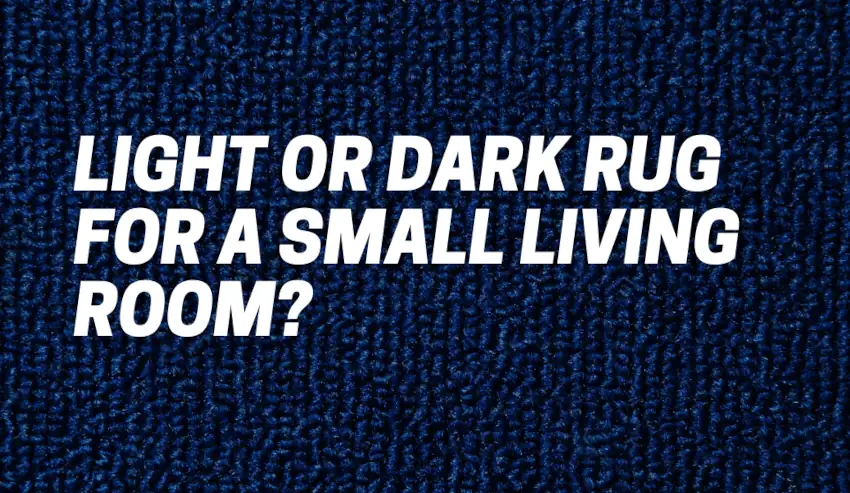Last updated on November 2nd, 2023 at 01:24 am
Natural fiber rugs have become increasingly popular due to their eco-friendly and versatile nature. These rugs are crafted from materials sourced from nature, such as sisal, seagrass, and jute, offering a unique texture and aesthetic to any living space. If you’re considering adding a natural fiber rug to your home, you may have questions about their durability, maintenance, and overall quality.
In this article, we’ll explore the world of natural fiber rugs and help you choose the most durable option that suits your needs.
Brief Overview of Natural Fiber Rugs
Natural fiber rugs are made from plant or animal-based materials that are grown or raised without the use of synthetic fertilizers or pesticides.
They are hand-woven by skilled craftsmen around the world and come in various styles and patterns. The four most common natural fibers used in making rugs are jute, sisal, wool, and seagrass.
Jute is a soft and silky fiber that is often used as a base material for other types of natural rugs such as sisal or wool.
Sisal fibers come from the leaves of agave plants and have a rougher texture than jute but are still durable enough for high-traffic areas.
Wool is another popular material that provides warmth while being soft underfoot. Seagrass is a renewable resource grown in coastal regions and has a naturally smooth texture.
Importance of Durability in a Rug
When you invest in an area rug for your home, you want it to last for years to come without showing signs of wear and tear easily.
Durability is especially important if you have children or pets who spend a lot of time on the floor playing or lounging around. A durable rug will withstand heavy traffic areas without fraying at the edges or losing its shape over time.
It should also be easy to clean so that you can maintain its appearance without too much effort. In this article, we’ll examine which natural fiber rug is most durable and suitable for your home.
Are Natural Fiber Rugs Good?
Natural fiber rugs are an excellent choice for various reasons.
They are known for their durability, sustainability, and ability to add a touch of natural elegance to any room. These rugs are typically hand-woven, contributing to their exceptional quality and craftsmanship.
Natural fiber rugs also offer a wide range of styles, textures, and colors, making it easy to find the perfect rug that matches your personal taste and interior decor.
However, it’s essential to consider the specific characteristics of different natural fiber materials to determine the most suitable option for your requirements.
What is the Most Durable Natural Rug Material?
When it comes to durability, sisal rugs stand out as the most robust natural fiber option. Sisal is a natural fiber derived from the leaves of the agave plant, known for its strength and resilience.
Sisal rugs can withstand heavy foot traffic without showing signs of wear and tear. Their tight weave and sturdy construction make them an ideal choice for high-traffic areas like hallways, entryways, or living rooms.
Which is Better: Sisal or Seagrass Rugs?
While sisal rugs offer exceptional durability, seagrass rugs have their advantages as well.
Seagrass is a natural fiber derived from aquatic plants. Seagrass rugs are resistant to stains, making them an excellent choice for households with pets or young children. These rugs also have a natural water-resistant quality, allowing them to withstand spills and humidity without damage.
Seagrass rugs are commonly used in coastal-themed or tropical-inspired interiors due to their unique texture and appearance.
Seagrass rug
Choosing between sisal and seagrass rugs ultimately depends on your specific needs. If you prioritize durability and heavy foot traffic, sisal rugs are the better choice.
On the other hand, if you’re concerned about stains and moisture, seagrass rugs offer greater resilience in those areas.
What is the Best Natural Fiber Carpet?
When it comes to natural fiber carpets, wool is often considered the best option due to its durability, softness, and insulating properties.
While wool is not technically a plant-based natural fiber, it is an excellent choice for those seeking natural and sustainable carpeting options.
Wool carpets provide excellent sound absorption, trap allergens, and are resistant to stains and dirt. They offer a luxurious feel underfoot and can last for decades with proper care.
Sisal vs. Jute: Pros and Cons
Sisal and jute are both popular choices for natural fiber rugs, but they have distinct characteristics and benefits.
Sisal:
- Pros:
- Exceptional durability
- Resistant to stains and spills
- Ideal for high-traffic areas
- Versatile in terms of design and style
- Cons:
- Prone to fading if exposed to direct sunlight
- Not suitable for humid environments
Jute:
- Pros:
- Affordable and budget-friendly
- Soft and comfortable texture
- Great for adding warmth to a space
- Environmentally friendly and biodegradable
- Cons:
- Less durable than sisal or seagrass
- More prone to shedding and wear
- Susceptible to moisture damage
Rugs That Look Like Jute But Don’t Shed
If you love the look of jute but want to avoid the shedding often associated with it, there are alternative natural fiber rugs that offer a similar aesthetic.
One such option is hemp rugs.
Hemp is a strong and sustainable natural fiber that closely resembles jute but doesn’t shed as much. These rugs provide the same earthy and rustic appeal as jute while offering greater durability and minimal maintenance.
What is the Softest Natural Fiber Rug Material?
If softness is your primary concern, consider rugs made from bamboo silk.
While not a plant-based fiber, bamboo silk is derived from bamboo pulp and offers a luxuriously soft texture.
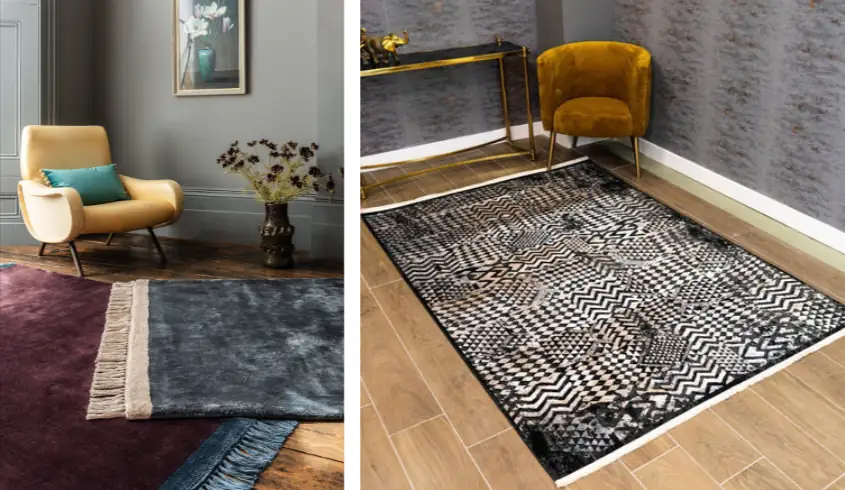
Bamboo silk rugs are often used in bedrooms and areas where comfort is prioritized. They add a touch of elegance and plushness to any space while maintaining a natural and eco-friendly profile.
How Long Do Natural Fiber Rugs Last?
The lifespan of a natural fiber rug largely depends on the material, construction, and level of foot traffic it experiences.
On average, a well-maintained natural fiber rug can last anywhere from 5 to 20 years. Sisal rugs, known for their durability, tend to last longer than other natural fiber rugs.
To extend the lifespan of your rug, ensure regular cleaning, proper maintenance, and avoid exposing it to excessive sunlight or moisture.
How Do You Protect a Natural Fiber Rug?
To protect your natural fiber rug and prolong its lifespan, consider the following tips:
- Use rug pads: Place a quality rug pad underneath your rug to provide cushioning, prevent slipping, and protect it from excessive wear.
- Rotate your rug: Regularly rotate your rug to distribute foot traffic and minimize uneven wear patterns.
- Avoid direct sunlight: Exposure to direct sunlight can cause fading and discoloration. Use window coverings or blinds to protect your rug from harmful UV rays.
- Clean spills immediately: Blot any spills on your rug immediately using a clean cloth or paper towel. Avoid rubbing, as it can push the stain deeper into the fibers.
- Regular vacuuming: Vacuum your rug regularly to remove dirt, dust, and debris. Use a vacuum cleaner with a brush attachment or a canister vacuum to prevent damage to the fibers.
How Do You Keep a Natural Fiber Rug from Shedding?
Natural fiber rugs, especially jute, may shed initially due to loose fibers. While shedding is a normal occurrence, you can minimize it by following these steps:
- Regularly vacuum: Vacuum your rug regularly with a brush attachment to remove loose fibers and prevent them from accumulating.
- Avoid excessive moisture: Excess moisture can weaken the fibers and increase shedding. Keep your rug in a dry environment and avoid steam cleaning or saturating it with water.
- Trim loose threads: If you notice loose threads or fibers on the surface, trim them carefully with scissors to prevent further shedding.
- Be patient: Shedding usually decreases over time as loose fibers are naturally released. With proper care, the shedding will diminish gradually.
Factors to consider when choosing a natural fiber rug
Beyond durability, several other factors should be considered when selecting a natural fiber rug that suits your needs best.
- The first factor you should consider is your lifestyle; if you have children or pets in your home, you may want to avoid jute as it tends to shed more than other fibers.
- Secondarily, consider your space’s design; jute and sisal both have a more casual look that may not fit a formal living room.
- Thirdly, consider the thickness of the rug; thicker rugs may be more comfortable underfoot, but they can be harder to clean and maintain.
- You should consider your budget; wool rugs are the most expensive option while jute is one of the most affordable.
Each natural fiber rug has its unique characteristics that make it suitable for different lifestyles and spaces in our homes.
By comparing their durability and other factors such as their texture, design, thickness, and price point – you can find the perfect natural fiber rug for your needs!
FAQs
What is the weakest natural fiber?
The weakest natural fiber commonly used in rugs is likely cotton. While cotton rugs offer softness and affordability, they are not as durable as other natural fiber options and may show signs of wear and tear relatively quickly.
